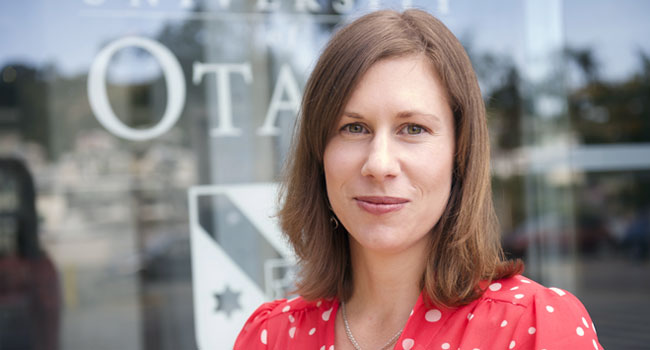
The healthiest food choices are not always the easiest ones to make, says Dr Ninya Maubach, of the University of Otago's Department of Marketing.
Maubach, who is based in Wellington, is researching the strategies supermarket shoppers use to make decisions about which foods to buy.
“Specifically, I want to identify which sources of information shoppers look at most often, how the information is applied and assess whether this helps consumers form accurate impressions,” she says.
Professor Janet Hoek (Department of Marketing) is Maubach's research mentor for the project and Dr Svetlana Bogomolova (Ehrenberg Bass Institute, University of South Australia) is serving as an expert advisor.

Dr Ninya Maubach.
The project continues Maubach's PhD research, which investigated how alternative front-of-pack nutrition labels and claims about nutrients influenced choice behaviour.
“The food industry is fiercely protective of its ability to control the message consumers receive about foods. The industry has lobbied strongly against Multiple Traffic Light food labels all over the world, despite very good research evidence of its effectiveness.”
“I want to identify which sources of information shoppers look at most often, how the information is applied and assess whether this helps consumers form accurate impressions”
Maubach's current project is concerned with “heuristic decision making” in supermarkets.
“A heuristic is a strategy that ignores part of the information, with the goal of making decisions more quickly, frugally, and/or accurately than more complex methods,” she says.
“We know from observational research that shoppers make decisions very quickly – typically within a few seconds of approaching a product display and usually without even picking up any packs to view the objective nutrition facts.”
Maubach will use a range of qualitative methods, including the use of Tobii mobile eye-tracking glasses.
“I'll recruit up to 50 participants, who'll wear these on a routine grocery shop. Afterwards, I'll use retrospective, think-aloud interviews as participants watch their videos, to examine their thought-processes.
“The second half of my research project is about identifying insights from the eye-tracking research and testing potential new packaging interventions using choice experiments,” she says.
“Our ever-growing child-and-adult weight statistics show that we clearly need to design a food system that helps people choose health-promoting diets,” she says.
2014 HRC Emerging Researcher first grants
Funding
- Health Research Council Emerging Researcher First Grant
- New Zealand Heart Foundation
